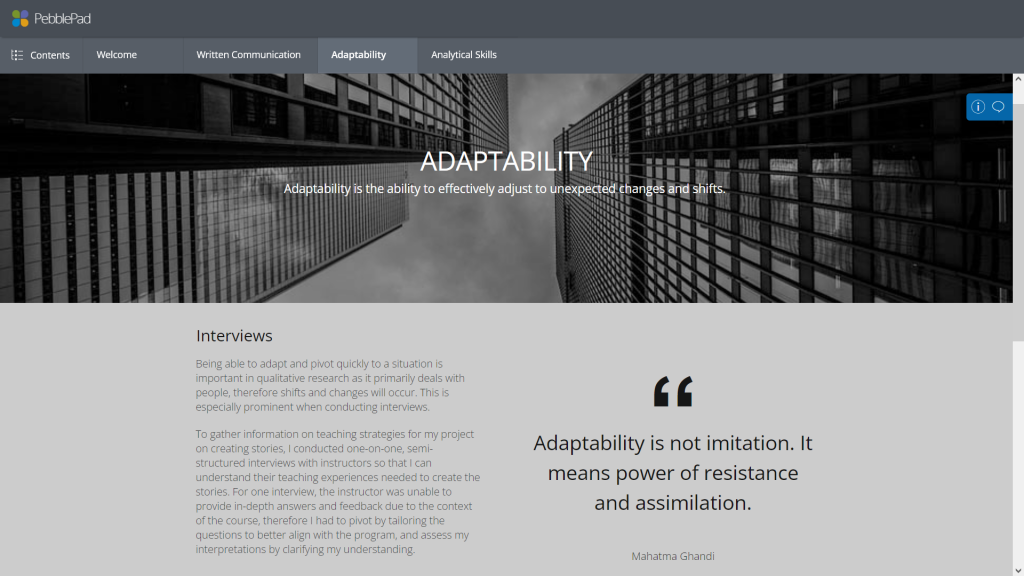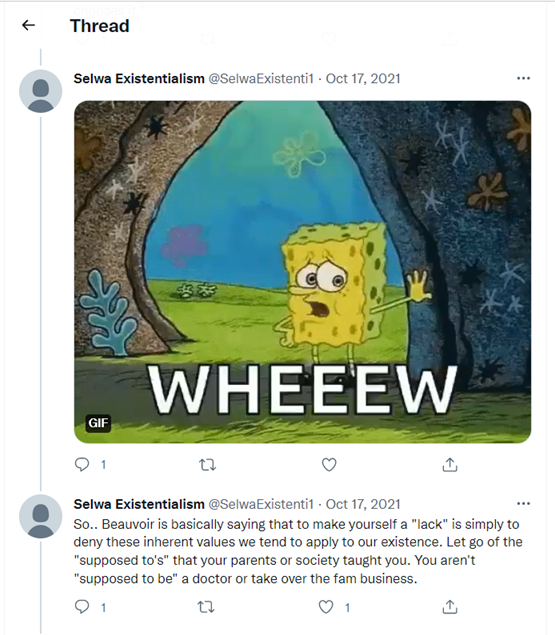Getting to Know Digital Media Assignments
What Are Digital Media Assignments?
Digital media assignments ask learners to create a piece of work, deliverable, or artifact using digital tools. The digital media could be a video, website, infographic, podcast, or social media post.
A digital media assignment can also ask learners to use digital content to support written explanations, narratives, or reflections.
Select a topic below, marked with an arrowhead, to reveal more information.
Video
Video is a versatile medium that can present information in a variety of formats and styles, including live-action, animations, and screen recordings. Documentaries, interviews, infomercials, video journals (vlogs), mash-ups, and recorded presentations or performances are suitable styles for video-based assignments.
Here is an example of an animated video created by a group of University of British Columbia students as part of an assignment for a Linguistics course.
Ling 100 International Journey of Phonemes & Allophones with Works Cited
Download transcript [PDF]

Website
Websites are effective digital substitutes for some traditionally paper-based assignments. For example, an ePortfolio instead of a print portfolio, a blog in place of a journal, or a website that presents an academic poster.
In this example of an ePortfolio, University of Waterloo student Sarah Vu Nguyen reflects on the skills that she acquired during her summer work experience.
Explore Sarah’s full ePortfolio and other ePortfolios from University of Waterloo students.

Infographic
Infographics communicate complex information in a concise and organized manner. In addition to summarizing data, infographics can include mind maps and graphical abstracts.
Here is an example of a graphical abstract for a pop-science magazine.

Illness-causing bacteria can live inside human cells, protected from antibiotics and the immune system. They can become resistant to our antibiotics, with no effective treatments to kill them. We developed a new treatment that boosts the strength of antibiotics and destroys resistant bacteria inside cells. This could be a new weapon against superbugs, making treatments of chronic infections more effective.
Podcast
Audio recordings are useful for capturing group discussions, storytelling (factual or fictional), interviewing, and journaling.
Listen to this sample mini-podcast created by Aidan Kaplan of the University of Chicago. Download transcript [PDF]
Social Media Posts
Social media posts can be text, video, or image-based. Creating posts is an engaging way to organize online class discussions and help learners develop concise, audience-targeted communication skills.
In this example, Robin James of the University of North Carolina asks her students to explain a philosophical concept to a lay audience using the social media platform of their choice. View full samples of her students’ work and the assignment details in her blog post, “Social Media Explainer Assignment – with student examples“.


What is your experience with digital media assignments? What types of digital media have you included in your assessments? What types would you like to explore?
How Do Digital Media Assignments Benefit Online Learners?
In the interactive element below, use the menu bar (☰) on the left or the arrows on the right to view the content on all 4 pages.
Aligning Digital Media Assignments to Learning Outcomes

When should you consider a digital media assignment?
Just because you can assign a digital project, does not mean you should. Technology has the potential to create barriers to learning if not used appropriately. Therefore, instructors must carefully consider when and how to use digital media assignments and ensure that adequate resources are in place to support learners throughout the process. Failure to do so may result in frustration, poor performance, and inaccurate measures of learner achievements.
As with all assessments, begin by considering the intended learning outcomes. Does the use of a digital media assignment align with, advance, or reinforce the learning goals? Does it make sense for learners to communicate their ideas through a video, website, or infographic rather than in writing? Is the selected media format (e.g. video versus infographic) appropriate for demonstrating course or program learning goals?
A good test is to consider whether this type of media aligns with an authentic career or life task. Linking digital media assignments to authentic scenarios harnesses the benefits of both alternative and authentic assessment strategies. It brings context, relevance, and value to the assessment, and uses technology to support learning, not for technology’s sake. Examine the following examples of digital media assignments aligned with learning outcomes and authentic tasks.
In the interactive element below, use the menu bar (☰) on the left or the arrows on the right to view the content on all 6 pages.
 Digital media assignments can be adapted for formative online assessment as well. For example, ask learners to create a simple mind map summarizing a lesson and post it to the course discussion board. Or use tools such as VoiceThread, Padlet, and Jamboard that allow learners to comment through a variety of media formats.
Digital media assignments can be adapted for formative online assessment as well. For example, ask learners to create a simple mind map summarizing a lesson and post it to the course discussion board. Or use tools such as VoiceThread, Padlet, and Jamboard that allow learners to comment through a variety of media formats.


